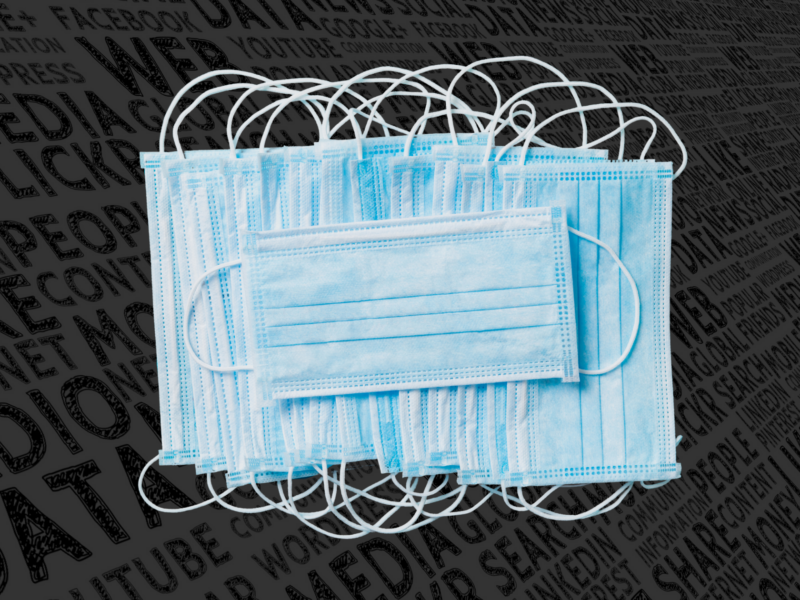Review by Megan Genovese with contributions from Florence Madenga
“DOCUMENTARY BRINGS US INTO INTIMACY WITH STRANGERS, CREATING SPACE TO STAND IN AWE OF THEIR COURAGE, HAVE COMPASSION FOR THEIR PAIN, AND BECOME ANGERED AND DETERMINED ON THEIR BEHALF. IT GIVES US THE RESOURCES TO BE MORE MINDFUL AND DELIBERATE IN UNMAKING AND CREATING OUR SHARED WORLD.“
The 6th annual Double Exposure Investigative Film Festival, held remotely for the first time, ran October 14-18, 2020 across live panels, workshops for career development and live film screenings. The remaining seventeen films and two collections of shorts were available asynchronously, and all feature films included Q&As with the filmmakers. Though the legal and infrastructural hurdles to setting this up must have been formidable, the film festival was well worth the effort. Frankly, all film festivals should have a remote attendance option. Not having to choose between simultaneous screenings, being able to pause and rewind as needed or quietly sit with a film before moving on, eating a homemade dinner on one’s own couch while watching—it’s the perfect way to see a festival slate.
The topics of half of the features were mostly based outside of the United States, split roughly between Asia, Europe, and Central and South America. Although the omission of topics and filmmakers based in Africa was unfortunate and will hopefully not be repeated, the range of subjects and styles across the lineup showcased investigative film’s capacity to meet topics historical and ongoing, individual and systemic, personal and political, and to showcase their relevance to the current moment. This is the case with even the funny-turned-thoughtful The Mole Agent, about an elderly man hired to investigate a Chilean nursing home from the inside. Director Maite Alberdi had intended to tell a story about private detectives, and it turns into a tale of aging, isolation, and the joy of finding community and purpose where one least expects it. The poignancy is unscored by Alberdi revealing that since the pandemic began, the nursing home has had to schedule tablet access for the flurry of video calls with families that had never visited before.

It’s impossible to pick favorites, so I’ll instead highlight the timeliest films. Festival opener 76 Days is an affecting chronicle of Wuhan’s citywide lockdown in early 2020. It’s also a logistical accomplishment with three directors: Hao Wu conceived and edited the project from New York using footage from journalists Weixi Chen and Anonymous, who each started shooting independently. Chen and Anonymous briefly left the project when US-China tensions mounted in March but were convinced to re-partner with Wu after seeing a rough cut. The spartan production style without music or direct-to-camera pickup interviews is both a necessary result of the post hoc collaboration and, Wu said, a deliberate choice to “make it really raw, almost like you’re really there,” in contrast with typical COVID-19 reporting that relies on statistics to describe scale. 76 Days is a condensed microcosm of the pandemic at its first hotspot, the passage of time marked by the staff’s adaptation to the new normal, patients’ deaths and recoveries, and signs of life returning to the streets as the outbreak is gradually contained. We glimpse familiar faces in vignettes of discrete moments masterfully edited into sequences that rhyme: early on, phones in a hastily labelled bin for sanitized and bagged “ID cards and phones of the dead” ring as people frantically try to reach family and friends; a day before the lockdown lifts, air raid sirens wail across Wuhan in salute to the dead.

Accidentally coinciding with the whistleblower report of forced sterilizations in ICE detention centers, Belly of the Beast (dir. Erika Cohn) documents similar abuses in California’s prisons also targeting women of color. I was unable to see the film and here paraphrase the synopsis and reflections of my colleague Florence Madenga: It is a necessary but heartbreaking exposure of yet another facet of systematic devaluation of Black women’s lives in America. The film traces the eugenicist history of sterilization in California but focuses on women telling their own stories, from Cynthia Chandler and other lawyer/activists at Justice Now, to Kelli Dillon, a victim of domestic violence, a legal system that punished her for protecting herself and her sons from their abuser, and illegal sterilization. The filming is intimate, unflinching, but respectful of the women’s trauma. In a few shots where survivors are telling their stories, we can only see their legs and feet as they sit on the edge of the medical exam table. This is much appreciated after detailed accounts of how invasive the prison guard gaze is; there is so little privacy that guards have a clear view of women switching out their tampons. Justice Now gets legislation passed to make non-consensual prison sterilizations definitively illegal, but Belly of the Beast makes it clear that, while this narrative arc is one of resistance and victory, it is not a “feel good” story. There is a lingering belief among the public, administrators, policymakers, and healthcare providers that incarcerated women are somehow trying to “game the system,” and these forced sterilizations as birth control save taxpayer money. Doctors haven’t faced repercussions for their involvement, and forced sterilizations continue with impunity in other states (just as the ICE story left the headlines as swiftly as it emerged, with no structural reform). Dillon is clear that while she has learned to advocate for herself, she now has to live with something that happened to her unchecked, most likely because she is a Black woman.

A Thousand Cuts by Ramona Diaz follows Maria Ressa, one of the founders of independent outlet Rappler, as the Rodrigo Duterte administration and Filipino right become increasingly hostile to the press. Diaz also follows two right-wing candidates during the midterm elections and several reporters at Rappler, but Ressa is the heart of the film. It’s her we see at home, socked feet swinging as she tries to find time for a family beach day in her punishing schedule of international advocacy for press freedom. It’s the first documentary I’ve seen about someone I’ve met, for Maria spoke at the Center for Media at Risk launch symposium in 2018. As she had done for years and continues to do while harassed and threatened, Ressa was sounding the alarm about the danger of disinformation networks on social media. “When you only look at content,” she says again in A Thousand Cuts, “it’s a whack-a-mole game. I want to figure out what the lie is, then look at the network that spreads the lies.” Often a tiny network is “the nervous system” driving disinformation. It’s the twenty-six sock-puppet accounts that coined and started circulating the word “presstitutes,” a term laundered through right-wing outlets ultimately to be taken up by three million accounts to accuse journalists of being foreign agents for questioning Duterte’s expanding family wealth and brutal drug war. Ressa is indefatigable, but it is a hard fight; she’s arrested twice, accused of being part of a plotted coup, and Duterte’s allies sweep the election. The version of A Thousand Cuts shown at Sundance ended with Ressa’s characteristically hopeful words to Rappler colleagues in December 2019 that they could resist fear and silencing with truth and love. Since then, Ressa has been convicted of cyber libel and awaits trials for further trumped up criminal charges. A Thousand Cuts now includes a final scene of her delivering a statement after her conviction, now masked but still calling for the free press to keep working uncowed by intimidation tactics.

The situation in Romania documented in Collective at first seems less a losing battle than that in the Philippines. Named for the Bucharest club at which a 2015 fire led to multiple deaths, massive public protests, and the resignation of the right-wing government, the film follows investigative journalists at a sports gazette tracking a trail of corruption from the lack of fire safety measures at Colectiv. Belying government boasts, the burn unit was too small and underequipped. Families arranged for patients to be transferred to European hospitals, but the Romanian hospitals delayed paperwork in order to collect government-sponsored healthcare payments, while their staff neglected fire victims to the point of allowing maggots to infest their wounds. Thirty-seven died due to the use of disinfectants that were massively diluted both in production and at the hospitals, fueling hospital-acquired infections. (Ironically, the band playing the night of the Colectiv fire was singing about being fed up with political neglect and corruption.) Though Catalin Tolontan and his team were the only journalists to investigate the government response to the fire, as they look deeper, whistleblowers keep coming forward, eager for someone to finally do something about the corruption plaguing the healthcare system. The public is fed up and primed by the initial victory to keep pushing, helping to topple a second Minister of Health and a former mayor on a government anti-corruption initiative while embezzling hospital funds. A third Minister of Health begins sincere attempts to reform hospitals. But as the scope of the scandal spirals wider, the backlash hits; television news starts questioning if Tolontan is sowing panic. With the 2016 parliamentary elections looming, the Romanian right seizes the narrative, accusing the new Minister of Health of not approving lung transplants in Romania in order to funnel healthcare money to Viennese hospitals where he had previously worked. He points out that the hospital lacks crucial recovery equipment, but nationalistic rhetoric brought a right-wing resurgence by historic margins. It was comforting to hear in the Q&A with director Alexander Nanau that the Romanian right has not reprised its 2016 victories in subsequent elections, having lost public appeal for pursuing an essentially pro-corruption agenda. Yet whatever happened after the cameras stopped rolling, the fact of harm remains. Appropriately, Collective ends with a fire victim’s family visiting their son’s grave at Christmas. The father sings along to a love song on the radio, his voice cracking as he points to heaven.

In A Thousand Cuts, Ressa tells Americans that they should pay attention to the Philippines because it is a glimpse of our future if the slide into authoritarianism and corruption continues. It’s a warning worth heeding, but to draw conclusions from whether those trying to advance truth and justice win within the narrative confines of a documentary is a shallow reading and certainly not the filmmakers’ intent. That Ressa faces jail doesn’t mean we’re doomed, nor does the third Minister of Health urgently taking up the information Tolonton revealed and trying to reform the system mean that it is all going to be okay. It’s going to be a hard fight. There isn’t going to be a narratively satisfying conclusion. And still we fight, because the alternative is capitulating to corrupt power.
The reason investigative journalism is at risk in so many parts of the world is because it is essential to a free society. At its nominatively least successful, you send a spy into a nursing home you suspect is abusing its residents only to find you were mistaken, and you instead end up with a touching meditation on growing old. At its best, investigative journalism shows failures and cruelties that we otherwise wouldn’t know about or understand: a Filipino drug user extrajudicially killed in the street is also his community’s impoverishment, his mother’s cries that he was a good boy, and his president’s ruthless indifference. It can tell a story of people responding to or building something extraordinary; a story of how, as one nurse in Wuhan put it, you take the “once in a lifetime” opportunity to be of service to your community. Women whose autonomy was violated in the course of the more mundane trauma of the carceral state bare their pain to the public eye to prevent it from happening to anyone else. The ethos of investigative journalism is one of skepticism fueled by a conviction that understanding ourselves more deeply and coming to know people who have lived lives unlike our own betters society. Documentary brings us into intimacy with strangers, creating space to stand in awe of their courage, have compassion for their pain, and become angered and determined on their behalf. It gives us the resources to be more mindful and deliberate in unmaking and creating our shared world. These films can be hard to watch, especially one after the other after another, but my only regret is not being able to see them all.
Megan Genovese is a doctoral candidate studying the intersection of politics and popular culture. Her dissertation “Frameworks for Morality in Left-Wing Political Talk” uses interview and focus group data to examine how transformative media fans talk about politics, specifically whether left-wing fans express moral engagement with politics.


